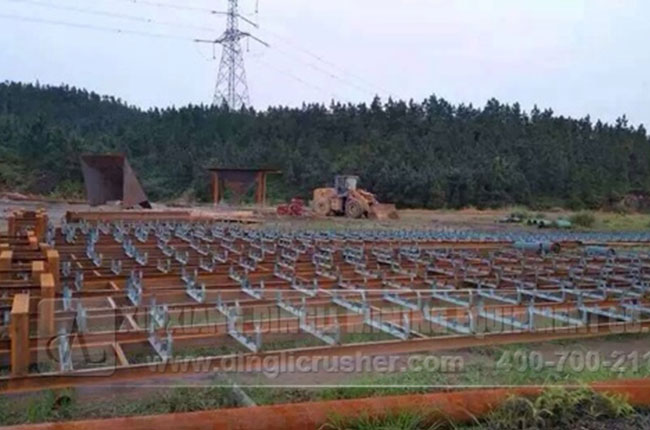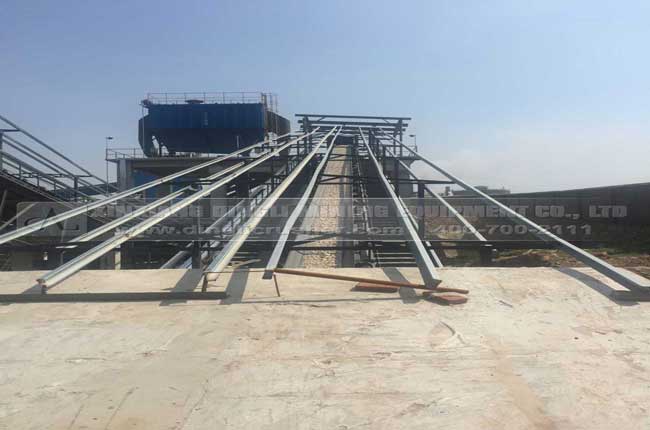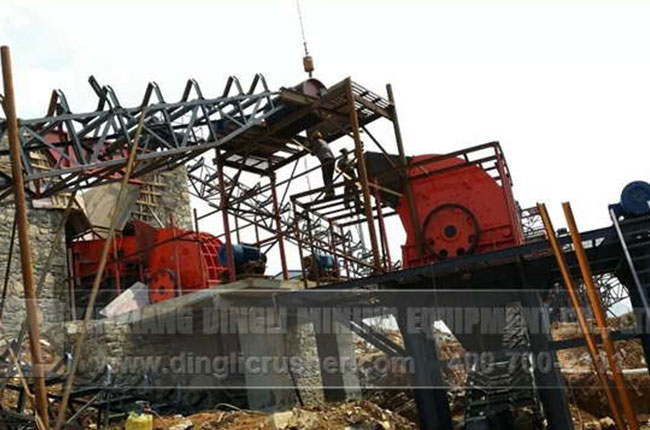 Sand Aggregate IndustryComprehensive Service Provider
Sand Aggregate IndustryComprehensive Service Provider Sand Aggregate IndustryComprehensive Service Provider
Sand Aggregate IndustryComprehensive Service Provider| Model | Eccentricity | Maximum Motor Installation Power (kW) | Throughput under Closed side Discharge Opening (CSS) (t/h) | |||
| 30mm | 35mm | 40mm | 45mm | |||
| GPY200S | 25 | 160 | 165 - 215 | 185 - 235 | 205 - 255 | 225 - 275 |
| 32 | 225 - 275 | 265 - 315 | 275 - 345 | |||
*Note: The processing capacity of the GPY200S cone crusher may vary with different materials and feeding sizes.

The 200t/h stone production line configuration is PCZ1510 heavy hammer crusher ZG0938 vibrating feeder 2YK1560 vibrating screen*2 sets.

The whole aggregates crushing line adopts closed production which can greatly improve the cleanness of environment. With construction workers stationed in the factory the construction period has been greatly reduced. It only takes 4 month

The operating process of this 400tph production line is crushed by PCZ heavy hammer crusher shaped by PCX shaping hammer crusher graded by vibrating screen and then sent qualified stone into finished material stockpile.
1. Excessive Oil Temperature: Root Cause Exploration and Coping Strategies
Excessive oil temperature is one of the common faults of medium crushing cone crushers. The causes are often insufficient lubricating oil, cooling system failure, equipment overload operation, or poor quality and deteriorated lubricating oil. Insufficient lubricating oil will increase the friction of equipment components and cause a sudden increase in heat; if the cooling system has problems such as water pipe blockage, cooler damage or fan failure, the heat dissipation effect will be greatly reduced; when the equipment is overloaded, the load increases, and the friction and energy loss will also lead to a sharp rise in oil temperature; and lubricating oil that does not meet the requirements or has deteriorated cannot lubricate effectively and will also cause abnormal oil temperature.
To solve the problem of excessive oil temperature, it is necessary to regularly check the oil level gauge and add qualified lubricating oil in a timely manner; carefully check the cooling water pipeline, clean the scale and impurities, and repair or replace the damaged cooler and fan; reasonably control the feed amount and material hardness to avoid overload; and strictly replace high-quality lubricating oil regularly according to the instruction manual.
2. Excessive Equipment Vibration: Analysis of Causes and Resolution Schemes
Excessive equipment vibration cannot be ignored. Uneven wear of the moving cone and fixed cone liners will lead to an imbalance of the gap and cause vibration; loose, worn or unbalanced transmission parts such as pulley, coupling, transmission shaft, etc. will produce shaking during operation; large differences in material particle size or the presence of foreign objects, as well as unstable equipment foundation, such as uneven installation foundation and loose anchor bolts, will all lead to increased equipment vibration.
To deal with this fault, the wear condition of the liners should be regularly checked, and they should be replaced and installed accurately in a timely manner; tighten the connection of transmission parts, replace worn parts, and conduct dynamic balance testing and adjustment if necessary; in the feeding process, use a vibrating screen to screen the material, remove foreign objects, and ensure uniform feeding; re-examine the equipment installation foundation, reinforce it and ensure that the anchor bolts are tightened.
3. Blockage of Discharge Port: In-depth Analysis and Unblocking Secrets
The blockage of the discharge port is often caused by excessive or too fast feeding, high material humidity or too small discharge port size. Feeding exceeding the equipment processing capacity will prevent the material in the crushing chamber from being discharged in time; materials with high humidity are prone to adhesion; improper adjustment of the discharge port will hinder the smooth discharge of materials.
To solve the blockage problem, it is necessary to strictly control the feed amount and speed, and an automatic control device can be installed; drying or adding a scattering device for materials with high humidity; and adjust the size of the discharge port according to the material characteristics and equipment situation in a standardized manner to ensure the smooth discharge of materials.
4. Uneven Product Particle Size: Reason Investigation and Improvement Measures
Uneven product particle size is mostly due to different sizes of the discharge port, uneven wear of the crushing chamber and uneven feeding. The deviation of the discharge port adjustment leads to different particle sizes of the discharged materials; the local wear of the crushing chamber affects the crushing effect; the unstable feeding makes the material receive uneven force in the crushing chamber.
To improve this situation, it is necessary to accurately measure and adjust the discharge port to make its size consistent; regularly check the crushing chamber and repair or replace worn parts; optimize the feeding system, use a vibrating feeder and set the amplitude and frequency reasonably to ensure uniform feeding.
Comprehensively understanding the common faults and solutions of medium crushing cone crushers can effectively reduce equipment downtime, improve production efficiency, reduce operation and maintenance costs, and lay a solid foundation for the stable production and development of enterprises. Whether in mining, building materials production, water conservancy and hydropower engineering and other fields, by accurately dealing with equipment faults, the efficient operation of medium crushing cone crushers can be ensured, and the smooth progress of production operations in various industries can be promoted.
We are present worldwide and always here to help.
Get in touch today!